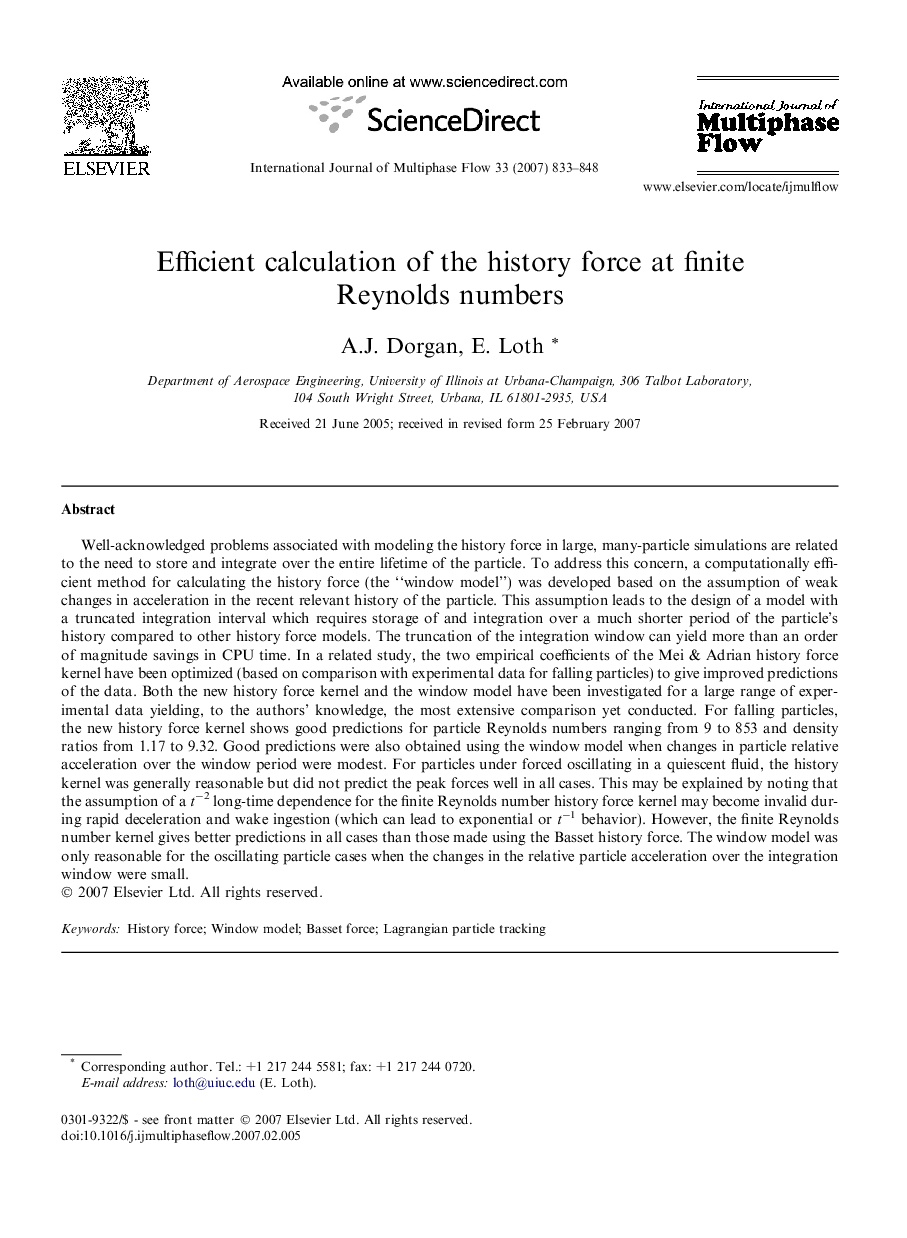| کد مقاله | کد نشریه | سال انتشار | مقاله انگلیسی | نسخه تمام متن |
|---|---|---|---|---|
| 667696 | 1458591 | 2007 | 16 صفحه PDF | دانلود رایگان |

Well-acknowledged problems associated with modeling the history force in large, many-particle simulations are related to the need to store and integrate over the entire lifetime of the particle. To address this concern, a computationally efficient method for calculating the history force (the “window model”) was developed based on the assumption of weak changes in acceleration in the recent relevant history of the particle. This assumption leads to the design of a model with a truncated integration interval which requires storage of and integration over a much shorter period of the particle’s history compared to other history force models. The truncation of the integration window can yield more than an order of magnitude savings in CPU time. In a related study, the two empirical coefficients of the Mei & Adrian history force kernel have been optimized (based on comparison with experimental data for falling particles) to give improved predictions of the data. Both the new history force kernel and the window model have been investigated for a large range of experimental data yielding, to the authors’ knowledge, the most extensive comparison yet conducted. For falling particles, the new history force kernel shows good predictions for particle Reynolds numbers ranging from 9 to 853 and density ratios from 1.17 to 9.32. Good predictions were also obtained using the window model when changes in particle relative acceleration over the window period were modest. For particles under forced oscillating in a quiescent fluid, the history kernel was generally reasonable but did not predict the peak forces well in all cases. This may be explained by noting that the assumption of a t−2 long-time dependence for the finite Reynolds number history force kernel may become invalid during rapid deceleration and wake ingestion (which can lead to exponential or t−1 behavior). However, the finite Reynolds number kernel gives better predictions in all cases than those made using the Basset history force. The window model was only reasonable for the oscillating particle cases when the changes in the relative particle acceleration over the integration window were small.
Journal: International Journal of Multiphase Flow - Volume 33, Issue 8, August 2007, Pages 833–848